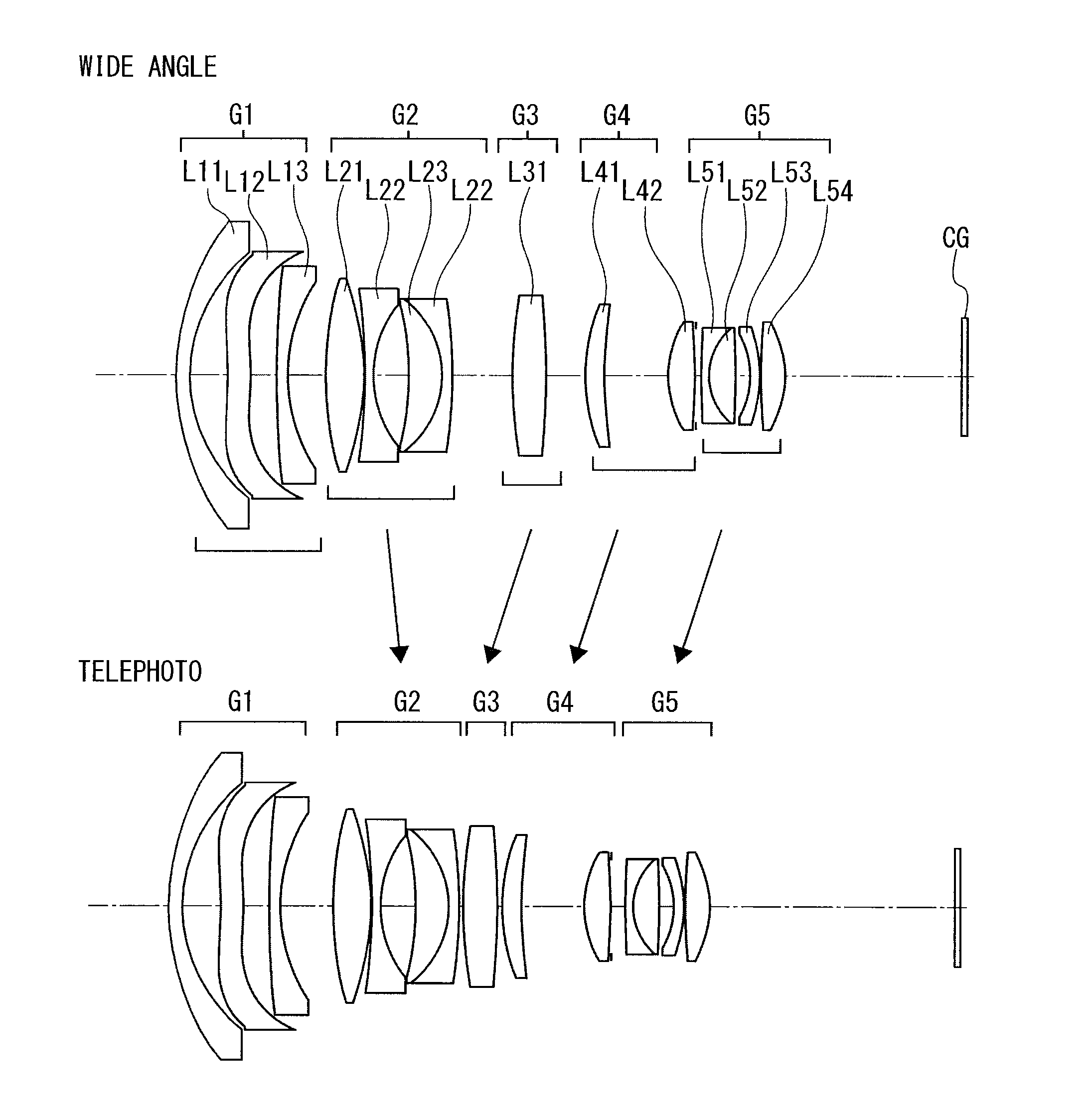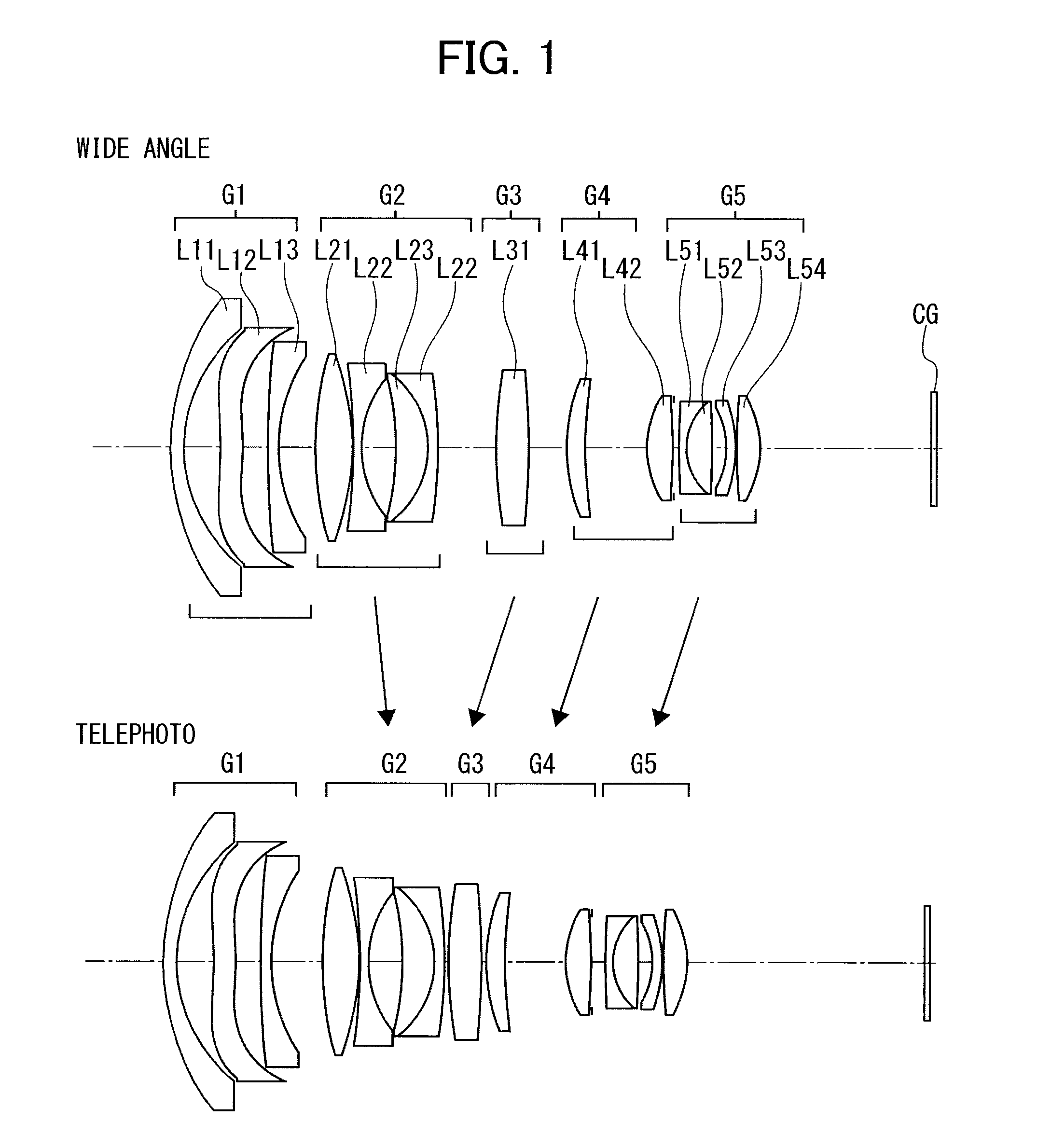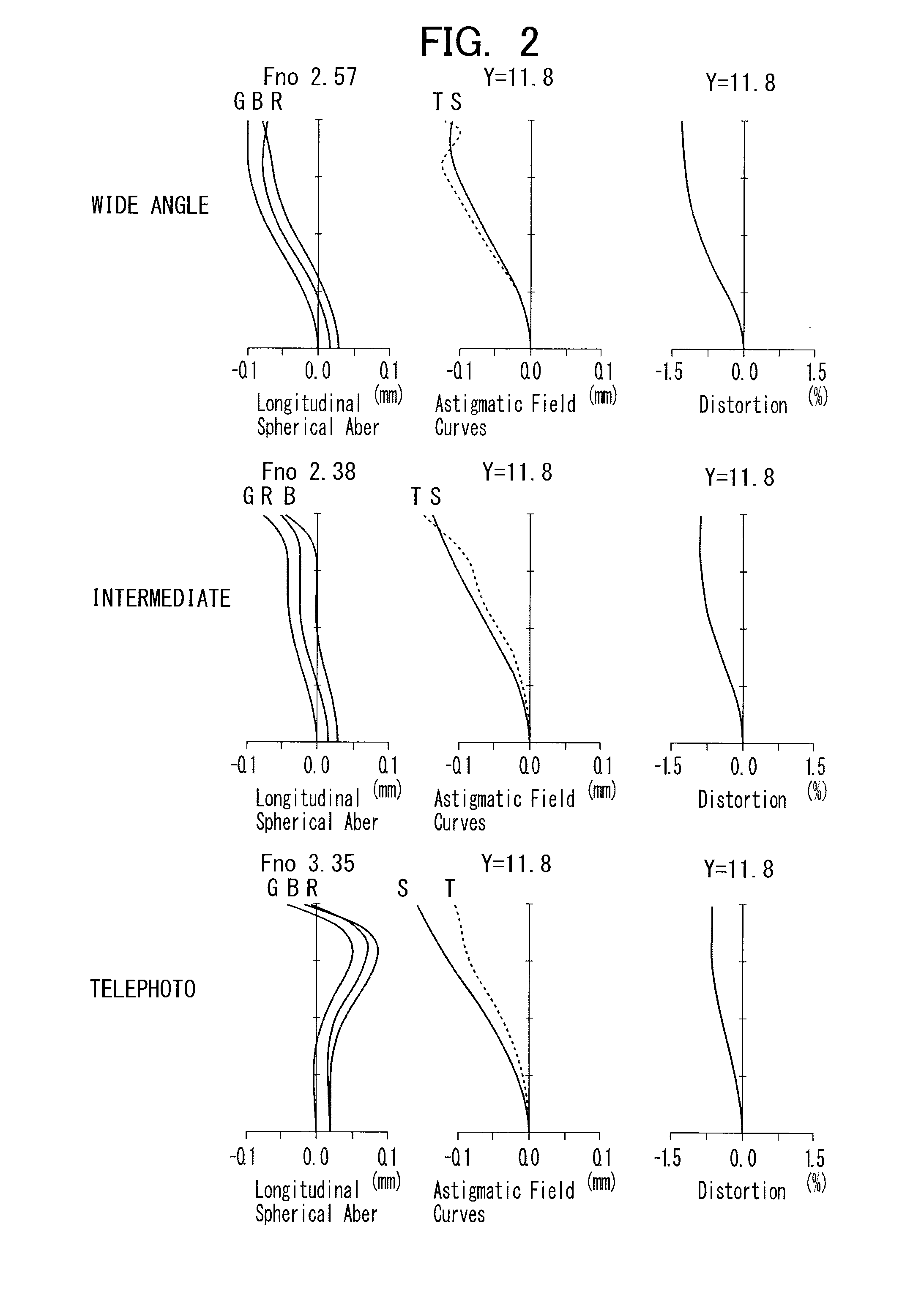Image display device
a technology of image display and display screen, which is applied in the direction of optics, instruments, optical elements, etc., can solve the problems of deterioration of aberrations, easy to notice distortion in the projected image due to distortion, and increase in the magnification ra
- Summary
- Abstract
- Description
- Claims
- Application Information
AI Technical Summary
Benefits of technology
Problems solved by technology
Method used
Image
Examples
example 1
[0532]FIG. 1 shows a projection zoom lens of Example 1.
[0533]As shown in FIG. 1, a first lens group G1 includes lenses L11 to L13, and a second lens group G2 includes lenses L21 to L24.
[0534]A third lens group G3 includes one lens L31, and a fourth lens group G4 includes two lenses L41 and L42.
[0535]A fifth lens group G5 includes four lenses L51 to L54.
[0536]As described above, a DMD is assumed as a light bulb and has a cover glass CG
[0537]When the magnification is changed from the wide angle end to the telephoto end, the second lens group G2 is moved to the reduction side, and the third to fifth lens groups G3 to G5 are moved to the magnification side.
[0538]The first lens group G1 is a negative group, and includes a negative meniscus lens L11 convex toward the magnification side, a negative lens L12 concave toward the magnification side, and a negative meniscus lens L13 concave toward the reduction side.
[0539]The second lens group G2 is a negative group, and includes a biconvex len...
example 2
[0584]FIG. 3 shows a projection zoom lens of Example 2.
[0585]As shown in FIG. 3, a first lens group G1 includes lenses L11 to L13, and a second lens group G2 includes lenses L21 to L24.
[0586]A third lens group G3 includes one lens L31, a fourth lens group G4 includes lenses L41 and L42, and a fifth lens group G5 includes lenses L51 to L54.
[0587]When the magnification is changed from the wide angle end to the telephoto end, the second lens group G2 is moved to the reduction side, and the third to fifth lens groups G3 to G5 are moved to the magnification side.
[0588]The first lens group G1 is a negative group, and includes a negative meniscus lens L11 convex toward the magnification side, a negative lens L12 concave toward the magnification side, and a negative meniscus lens L13 concave toward the reduction side.
[0589]The second lens group G2 is a negative group, and includes a biconvex lens L21, a biconcave lens L22, a positive meniscus lens L23 convex toward the reduction side, and a...
example 3
[0619]FIG. 5 shows a projection zoom lens of Example 3.
[0620]As shown in FIG. 5, a first lens group G1 includes lenses L11 to L13, and a second lens group G2 includes lenses L21 to L24.
[0621]A third lens group G3 includes a lens L31, a fourth lens group G4 includes lenses L41 and L42, and a fifth lens group G5 includes lenses L51 to L54.
[0622]When the magnification is changed from the wide angle end to the telephoto end, the second lens group G2 is moved to the reduction side, and the third to fifth lens groups G3 to G5 are moved to the magnification side.
[0623]The first lens group G1 is a negative group, and includes a negative meniscus lens L11 convex toward the magnification side, a negative lens L12 concave toward the magnification side, and a negative meniscus lens L13 concave toward the reduction side.
[0624]The second lens group G2 is a negative group, and includes a biconvex lens L21, a biconcave lens L22, a positive meniscus lens L23 convex toward the reduction side, and a n...
PUM
 Login to View More
Login to View More Abstract
Description
Claims
Application Information
 Login to View More
Login to View More - R&D
- Intellectual Property
- Life Sciences
- Materials
- Tech Scout
- Unparalleled Data Quality
- Higher Quality Content
- 60% Fewer Hallucinations
Browse by: Latest US Patents, China's latest patents, Technical Efficacy Thesaurus, Application Domain, Technology Topic, Popular Technical Reports.
© 2025 PatSnap. All rights reserved.Legal|Privacy policy|Modern Slavery Act Transparency Statement|Sitemap|About US| Contact US: help@patsnap.com



